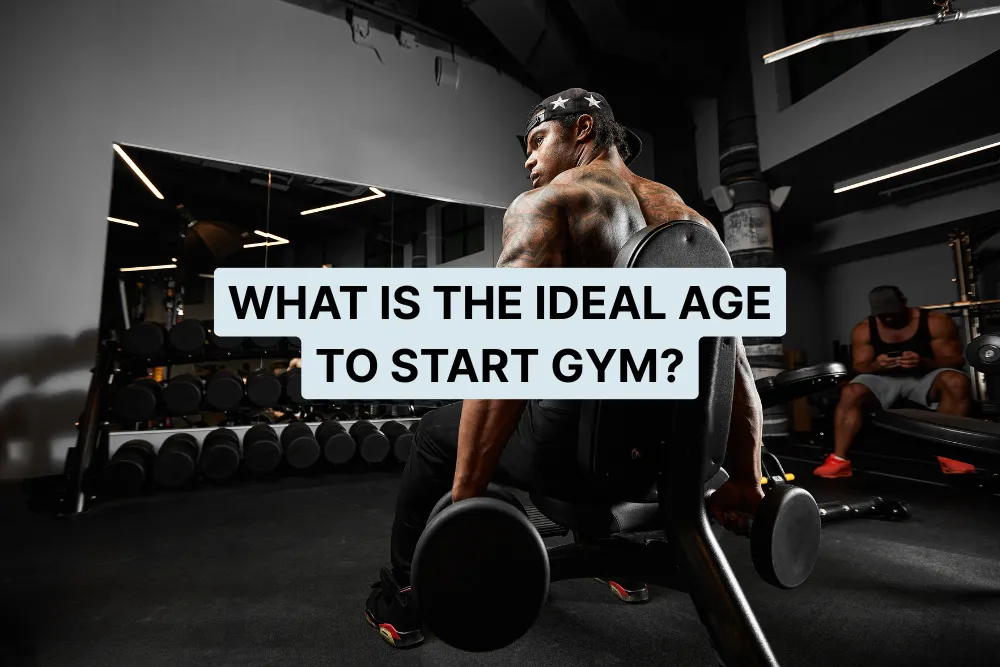Embarking on a fitness journey can be both exciting and daunting, especially when you’re unsure about the right time to start. This guide aims to demystify the ideal age for beginning gym workouts, offering insights into physical readiness, age-specific considerations, and the role of professional assessments. Whether you’re a parent considering the gym for your child or an adult ready to embrace a healthier lifestyle, understanding the nuances of starting gym activities at different ages can enhance your fitness experience.
Understanding the Ideal Age to Start Gym Workouts
When considering the best time to start gym workouts, it’s essential to understand the common age range for gym-goers, typically between 18 and 34 years old. This demographic tends to dominate gym memberships, making up about 31% of all gym-goers. The prime age for starting gym workouts is often considered to be between 17 and 18 years old. This period coincides with late adolescence, a time when individuals can benefit significantly from physical activity to support muscle and bone development.
However, the flexibility of starting gym activities at any age cannot be overstated. Many successful fitness enthusiasts have begun their journeys later in life, proving that it’s never too late to prioritize health and fitness. Physiological changes during young adulthood (18-35) make it an optimal time for gym workouts, as individuals experience peak muscle mass and bone density during these years. Additionally, starting gym activities at a younger age can foster discipline and maturity, setting the foundation for lifelong healthy habits.
Gym Training for Different Age Groups
Gym training can be adapted for any age, with specific routines designed to enhance growth and fitness benefits. For children, strength training can begin as early as ages 7 or 8, focusing on body weight exercises and low-weight dumbbells. This approach helps build foundational strength and motor skills in a safe, controlled manner. As children grow into teenagers, they can transition to more independent gym workouts around age 16, when most gyms allow individuals to train independently.
Starting weightlifting during late adolescence to early adulthood is particularly beneficial for muscle and bone growth. Resistance training during this period can significantly enhance physical development, laying the groundwork for a healthy, active lifestyle. Understanding age-related trends in gym memberships, such as the dominance of the 18-34 age group, can also inform your approach to gym training. Example routines might include bodyweight circuits for children, introductory weightlifting for teens, and more advanced strength training for young adults.
Trends and Innovations in the Fitness Industry
The fitness industry is constantly evolving, with Gen Z and Millennials dominating recent discourse. This demographic shift is accompanied by the rise of fitness tech and new exercise trends expected by 2025. Online training and outdoor fitness options are becoming increasingly popular, providing flexible alternatives to traditional gym routines. Gen Z, in particular, shows a strong preference for group classes and functional fitness, with 75% of gym-goers in this age group favoring these options.
Staying updated with industry trends can enhance your gym experience and ensure you align with modern fitness demands. For example, integrating fitness tech or participating in innovative workout classes can keep your routine fresh and engaging.
Pre-Gym Assessment: The Role of Physiotherapists
Before diving into a gym routine, a pre-gym assessment by a physiotherapist can be invaluable. This assessment involves evaluating posture, flexibility, balance, strength, and movement patterns to identify potential injury risks. By testing joint range of motion, muscle flexibility, core fitness, and movement quality during exercises like squatting or lifting, a physiotherapist can develop a personalized exercise plan tailored to your needs.
These assessments help ensure that you start exercising with proper form, which is crucial in preventing injuries and enhancing your preparedness for physical activity. For example, an evaluation might reveal a lack of flexibility in the hamstrings, prompting targeted exercises to address this issue before it leads to strain. Starting with proper form not only reduces injury risk but also maximizes the effectiveness of your workouts, allowing you to achieve your fitness goals more efficiently.
Conclusion
Starting gym workouts is a personal journey with no one-size-fits-all answer. By understanding your body, age-related considerations, and the evolving fitness landscape, you can make informed decisions that align with your health goals. Embrace the journey with confidence, knowing that each age offers unique opportunities for growth and wellness. Whether you’re just beginning or looking to refine your routine, the key is to start where you are and progress at your own pace, ensuring a sustainable and enjoyable fitness journey.

Amit Saraswat is the Founder of Physioveda Medical Center, a Dubai-based clinic focused on personalized physiotherapy and integrative healthcare. With a passion for patient-centric solutions, he leads the vision behind Physioveda’s evidence-based approach to pain relief and long-term recovery.

